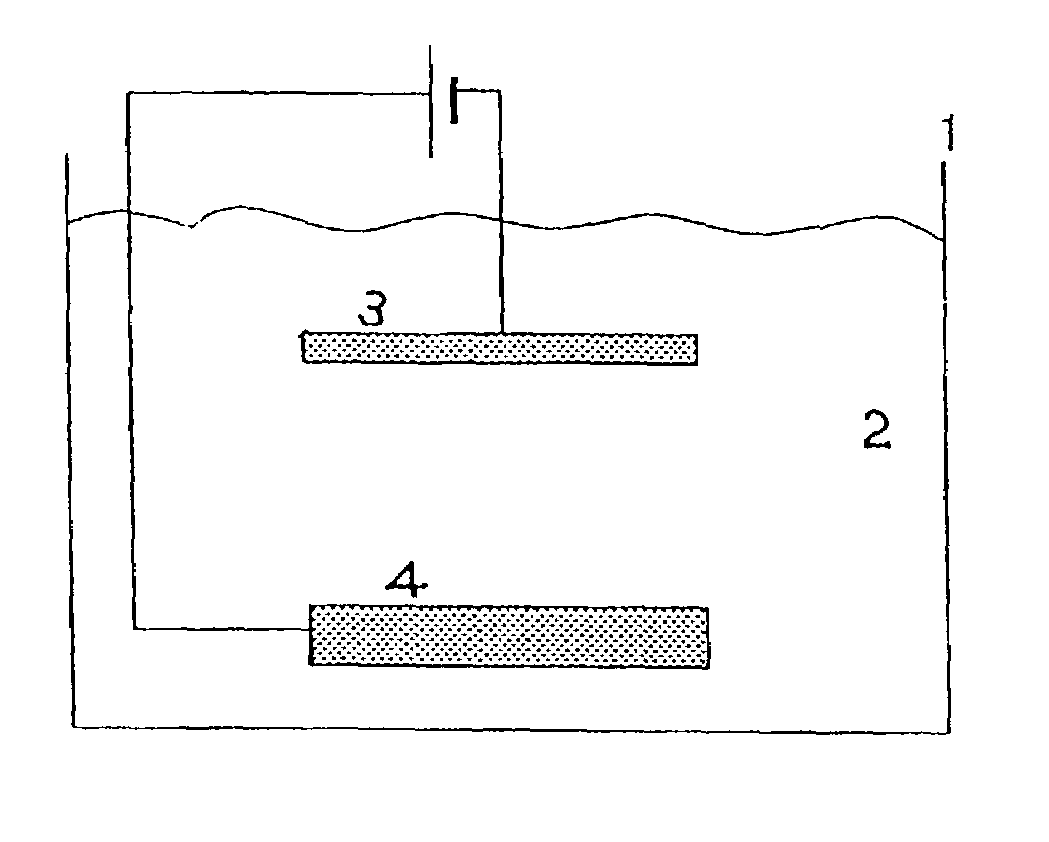Electrolytic copper plating method, phosphorous copper anode for electrolytic plating method, and semiconductor wafer having low particle adhesion plated with said method and anode
- Summary
- Abstract
- Description
- Claims
- Application Information
AI Technical Summary
Benefits of technology
Problems solved by technology
Method used
Image
Examples
examples 1 to 4
[0044]As shown in Table 1, phosphorous copper having a phosphorous content of 300 to 600 wtppm was used as the anode, and a semiconductor was used as the cathode. The crystal grain size of these phosphorous copper anodes was 10 to 200 μm.
[0045]As the plating liquid, copper sulfate: 20 to 55 g / L (Cu), sulfuric acid: 10 to 200 g / L, chlorine ion 60 mg / L, additive [brightening agent, surface active agent] (Product Name CC-1220: manufactured by Nikko Metal Plating): 1 mL / L were used. The purity of the copper sulfate within the plating liquid was 99.99%.
[0046]The plating conditions were plating temperature 30° C., cathode current density 1.0 to 5.0 A / dm2, anode current density 1.0 to 5.0 A / dm2, and plating time 19 to 96 hr. The foregoing conditions are shown in Table 1.
[0047]After the plating, the generation of particles and plate appearance were observed. The results are similarly shown in Table 1.
[0048]Regarding the particle amount, after having performed electrolysis under the foregoin...
examples 5 to 8
[0052]As shown in Table 2, phosphorous copper having a phosphorous content of 500 wtppm was used as the anode, and a semiconductor was used as the cathode. The crystal grain size of these phosphorous copper anodes was 200 μm.
[0053]As the plating liquid, copper sulfate: 55 g / L (Cu), sulfuric acid: 10 g / L, chlorine ion 60 mg / L, additive [brightening agent, surface active agent] (Product Name CC-1220: manufactured by Nikko Metal Plating): 1 mL / L were used. The purity of the copper sulfate within the plating liquid was 99.99%.
[0054]The plating conditions were plating temperature 30° C., cathode current density 1.0 to 5.0 A / dm2, anode current density 1.0 to 5.0 A / dm2, and plating time 24 to 48 hr.
[0055]With the foregoing Examples 5 to 8, in particular, illustrated are examples in which minute crystal layers having a crystal grain size of 5 μm and 10 μm were previously formed on the anode surface at a thickness of 100 μm, and a black film was also formed thereon at a thickness of 100 μm a...
PUM
| Property | Measurement | Unit |
|---|---|---|
| Grain size | aaaaa | aaaaa |
| Grain size | aaaaa | aaaaa |
| Grain size | aaaaa | aaaaa |
Abstract
Description
Claims
Application Information
 Login to View More
Login to View More - R&D
- Intellectual Property
- Life Sciences
- Materials
- Tech Scout
- Unparalleled Data Quality
- Higher Quality Content
- 60% Fewer Hallucinations
Browse by: Latest US Patents, China's latest patents, Technical Efficacy Thesaurus, Application Domain, Technology Topic, Popular Technical Reports.
© 2025 PatSnap. All rights reserved.Legal|Privacy policy|Modern Slavery Act Transparency Statement|Sitemap|About US| Contact US: help@patsnap.com


